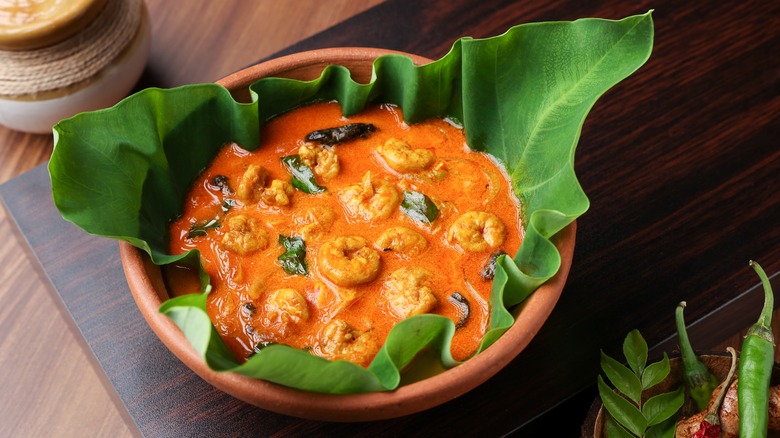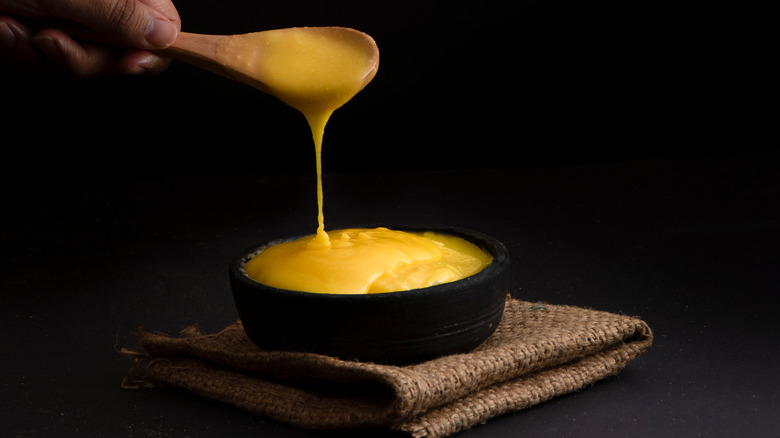The Best Fats For A Perfectly Fried Curry At Home
The group of dishes we call curry represent an amazing diversity of flavor — from Thailand's luscious red curry, redolent with lime leaves and lemongrass, to curry goat from Jamaica, which features thyme and allspice. Curries can be cream- or tomato based, feature every protein that can go in the pot, and boast flavor profiles that are idiosyncratic to their place of origin. Even in India, the red chili-spice and tomato-y goodness of a madras chicken curry is as far as can be imagined from the mild, spinach-based saag paneer.
No matter which curry you'd like to make, it probably involves a high-heat process similar to stir frying. For this crucial first step, it's vital to use a cooking oil with a high smoke point — the kind best suited for caramelizing onions or cooking out the raw flavor of dried spices. An oil's smoke point is the temperature at which free-floating fatty acids break down and produce smoke. Luckily, curry recipes from around the world generally call for high smoke-point cooking fats. But that's not the only criteria for choosing your ideal curry oil, because remember that fat is also flavor.
How to pair your curry with cooking fats
India's diverse regional dishes call for different cooking fats. Succulent cream-based kormas from India's northwestern state of Punjab as well as South Africa's bunny chow are typically made with ghee, which is a kind of clarified butter that has a respectable smoke point of 465 degrees Fahrenheit. The state of Goa, on India's western coast, is best known for its fiery vindaloo. Mustard oil, with its smoke point of around 480 degrees Fahrenheit, is in both taste and temperament best suited to this dish.
Curries from around the world pair wonderfully well with coconut oil, not only because of its luscious flavor but its relatively high smoke point of 350 degrees Fahrenheit. As a general rule of thumb, use coconut oil for any curry that calls for coconut milk, such as red, yellow, and Massaman curries from Thailand, smoky prawn curries from India's Kerala region, or Malaysian beef rendang.
Of course, it's not necessary to use such highly-flavored fats to make your curry: Vegetable, canola, and avocado are all neutral oils with smoke points of at least 400 degrees Fahrenheit. The only thing left to do is decide which part of the world you want to visit without leaving your kitchen.

